It was the Sunday of Thanksgiving weekend and we were barrelling down on Cooperstown, New York through the rolling hills of the Leatherstocking region. When I say “we”, I mean Dad and my younger brother Andy. We were there mostly to visit the Baseball Hall of Fame, but, knowing that Cooperstown was just down the highway from Ommegang, we thought that it would make sense to pay that a visit as well.
The winding country roads that follow the contours of the hills and lakes to the brewery at Ommegang lend the place a sense of isolation. Truth be told, Cooperstown is not a very large town and is fairly remote itself. The countryside is idyllic in early October and the sheer number of leafers up from the cities was obvious by the crowding in the parking lot and the Nikon branded camera straps hanging around L.L. Bean collars. The red and gold leaves on the hill in back of the brewery frame the brewery, which looks as though it was airlifted in from another century.
The brewery at Ommegang is deceptive. It was built in the mid 1990’s after a clearly Belgian inspired design. This means that it is really two wings of a building separated by what amounts to a gatehouse. The mirrored chevron pattern on the roof may hold some meaning that I’m unaware of, but it mostly presents a pleasing symmetry. It is a great deal larger than you would assume, looking at the outside and the brewhouse is laid out in a way that makes perfect sense.
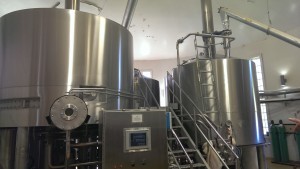
The brewhouse, if you can picture it, is a the far end of one of the wings of the brewery in a large, circular room.
I had sent an email to the brewery, asking what would be the best time to show up on a Sunday and when the tours ran. They very kindly offered to fit us in on a private tour before they started doing the official ones for the day.
Pete, who was good enough to shepherd us around the brewery (and to make sure we had adequate ocular protection) told us some very interesting things that I hadn’t realized. Ommegang is owned by Duvel Moortgat, but I didn’t realize that they had been purchased by them in 2003. This ends up being massively beneficial for Ommegang in a lot of ways. First of all, Duvel possesses a range of properties. There’s Achouffe and Liefman’s, both of which produce some stellar beers. I hadn’t realized that Ommegang’s Three Philosophers actually uses Liefman’s Kriek in order to add the cherry flavour to the beer. When you think about the logistics of that, it’s fairly daunting. That Kriek would be barrel aged and then kegged and shipped across the Atlantic before you could blend it with the Belgian Quad. (It’s much to Pete’s credit, incidentally, that he referred to Belgian Quadruple as “that made up style.”) They also have the benefit of using equipment that other breweries in the family have outgrown. They had a state of the art centrifugal filter on loan from Achouffe.
The other thing that I didn’t realize is how much in demand their product is. I believe I’m quoting the tour correctly when I say that last year they brewed 40,000 BBL of beer and this year they’re aiming for 56,000 BBL. They may not make it to that level, but in order to even attempt it, they now have nine brewers working around the clock five days a week. We can only hope the Leatherstocking aquifer can support that.
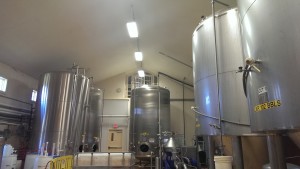
It’s hard to imagine getting 56,000 BBL through this brewery, but the fact that the beers are bottle conditioned would help with ferment time.
I found myself wondering about the difficulties of expanding production while keeping to the traditional methods currently in use. Ommegang uses open fermenters for the initial period of fermentation, taking krausen from the top of the previous batch and inserting it into the next one. The yeast is the dominant aroma in the brewery; the result of the Belgian strain that they’re using for all of their beers.
My visit was just a week before the announcement that Duvel Moortgat had taken over Boulevard in Kansas City, so I have some perspective on that takeover given what I’ve seen. I cannot imagine that this news is anything but positive. The strength of having a number of high quality brands under the same roof is clear in terms of resources available. If anything, Boulevard will probably improve slightly because they’ll have access to more materials. It’s not going to result in a dumbed down product. The thing that impressed me most is that a brewery like Ommegang should have a pilot system. Apparently those nine brewers I mentioned schedule time on the weekend to come in and brew pilot batches. If anything, the number of talented people working on the core lineup will result in research and development for interesting projects later on.
It’s the kind of thing that makes Stone Brewery’s pathetic barbs on twitter about the buyout make them look like angst ridden tweens.
Interestingly, out back of the building by the treeline, there’s a hop garden that is apparently part of an ongoing study by Cornell University to acquire information about hop growing in New York State. We all know that at one point it was a significant industry. Until the blight. I would imagine that the study will help determine whether hop yards should be moved back into the North East on a volume basis. If the number of breweries continues to expand, you’re going to need more hops. They’ve got 25 varieties planted, so it will be interesting to see what thrives. The research Alan and I have been doing on Ontario suggests that the varieties planted in the early 19th century were likely indigenous humulus lupulus varieties and not bred to resist blight. I shall have to get on the phone to Cornell and see what they can point me to in terms of resources.
Dad was skeptical, pointing out that it may not have been necessary to have the hops right next to a brewery and that the decision to have the site at all may have had something to do with the students’ desire to drink beer. I do not doubt it informed their decision.
I was impressed by the tasting portion of the tour and the café. Apparently the Ommegang Witte makes a fantastic mimosa, something that was mentioned by no fewer than three staff members (one of whom mentioned it while attempting to pour some from a draught tap into a half full Tropicana bottle with results that can only be described as risible.) I was most impressed by the Harvest beer, Scythe and Sickle. Rather than attempt to use wet hops or pumpkin spice, the brewers went with four varieties of grain: Barley, Oats, Rye and Wheat. The result with the Ommegang yeast is a beer with lively carbonation and a full body and rye spice in the mid palate that dries out nearly completely on the finish. I found myself wishing that more people would make beer that tastes like grain. It paired nicely with a croque madame from their café.
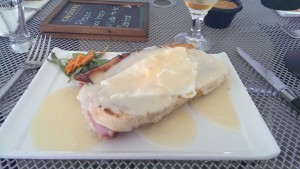
The Croque Madame is really about the bechamel sauce and the mustard. The Scythe and Sickle really cut through the creamy sauce.
Andy had the frites (I think they’re triple cooked) and a pizza crepe. I am told it was good. It disappeared quickly enough. It’s interesting to have lunch with a very morally proper fifteen year old at the end of a brewery tour. Indeed, justifying the beer writing career to a fifteen year old who believes that even trying a sip of beer might warp his spine, corrupt his soul and lose the country the war is a struggle. Especially if the fifteen year old in question is 6’5″. Then again, he took pictures on the tour and updated facebook with a giant bottle of Duvel, so he may be coming around. He’s a good kid.
The impression that I came away with is that Ommegang is going to do some really interesting things in the next couple of years. They have talented people working on new ideas. The beer that they make is extremely consistent. In a number of ways they’re pretty far removed from the average North American craft brewery in terms of their attitude. They’re not about extremity. They’re not wild and crazy. The sense I get is that they will never turn out a bad beer. The R&D that the brewers are doing on the pilot system might help them turn out something really special in the near future, especially given the existing situation at the brewery of cautious optimism.
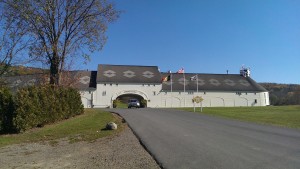
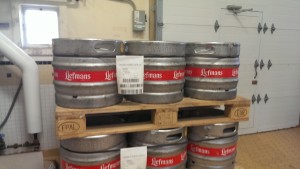
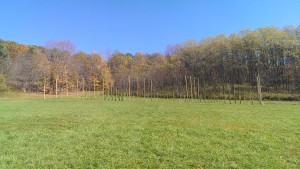
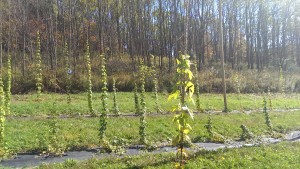
You have the greatest job on earth!!! I grow more jealous every time I read your posts!!!
It’s nice work if you can get it.
Jealous. Been meaning to go there. Also, Stone in person comes off the same way as their tweets.
Nice article. A few years ago my wife and I visited the Utica/Cooperstown area before my daughter was born. Did you get a chance to visit the Cooperstown brewery as well. It is way smaller although they make some really solid beers.
I didn’t, but I did get to see the Roberto Alomar plaque. That was pretty cool. Oddly, the Expos have more inductees than the Jays, unless you count Pat Gillick.